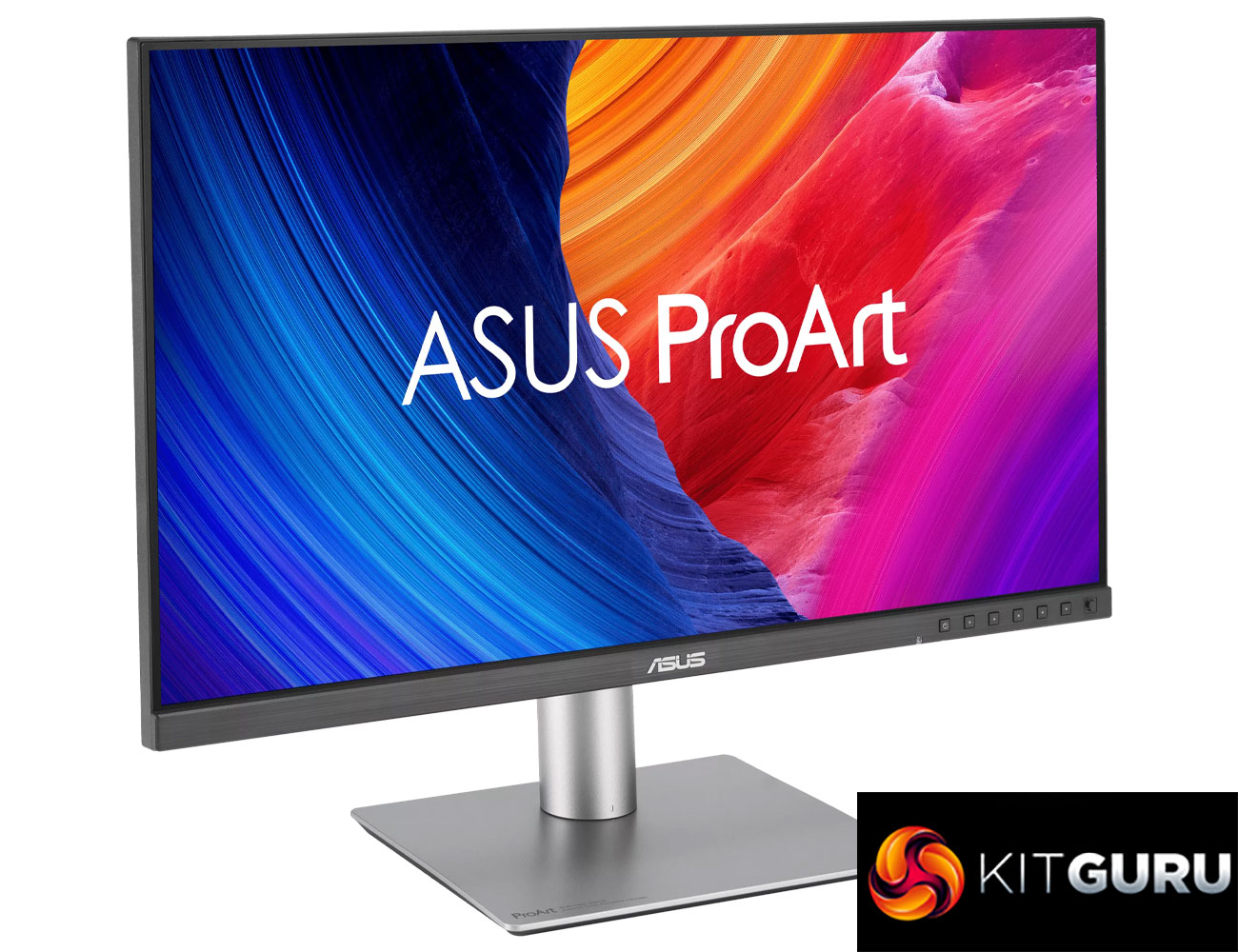It's been fascinating to test the ASUS ProArt PA27JCV for the last week, given its target market is a world away from the gaming screens I am used to reviewing. This is clearly designed for professional use, and discerning professional users at that, and I have to say ASUS has done a great job overall.
That's not to say the PA27JCV is perfect, and I'll get my biggest criticism out the way first – the build quality is a let down. Considering this is a $799 monitor, I'd expect a premium metal stand, not the mostly plastic construction that we have instead. I get that the panel itself is the main attraction here, and while the overall design is clean and modern, I just don't think it makes the best first impression given how much plastic is used throughout the build.
The other niggle is perhaps more subjective, but it's worth pointing out the PA27JCV uses what ASUS calls ‘LuxPixel AGLR (Anti-Glare, Low Reflection)'. In other words, it's a fairly strong matte coating, and while ASUS claims ‘the user only sees accurate colors and sharp details' thanks to the LuxPixel tech, some coating grain is still visible. Compared against a 5K Apple iMac (2019), I did find myself preferring the appearance of text on the Apple display, but everyone has their own preference when it comes to gloss vs matte.
However, if you're not too fussed about either of those points and just want a good-looking, easy-to-use professional monitor that has strong colour accuracy and plenty of features… well, the PA27JCV delivers in spades. I made a point of showing every single page and setting within the OSD menu as ASUS has done a really good job at catering to the needs of professional and creative types with just how feature-rich the OSD is, not to mention the built-in KVM support and 96W PD on offer from a rear USB-C port.
On top of that, this has to go down as the most colour accurate display I have ever tested. Out of the box results are good in their own right, with contrast hitting 1500:1 being a particular highlight for the IPS panel. However, ASUS' colour space modes are supremely well configured, to the point where anyone using the sRGB or DCI-P3 modes wouldn't even need to bother with calibration – they are that good.
The DCI-P3 mode is a particular highlight, delivering average deltaE results below 1 for greyscale performance, saturation and colour accuracy, alongside near-perfect gamma tracking. Anyone working in that colour space is in for a treat with the PA27JCV. The only downside to that is the PA27JCV won't be a viable option for those looking for real HDR support, given it's only DisplayHDR 500 certified. I don't see that as a big issue, though, as it's all relative to price and real pro-grade HDR monitors are considerably more expensive, but it is worth pointing out.
Overall, if you are in the market for a pro-grade screen, the ASUS ProArt PA27JCV is well worth picking up. It retails for $799 in the US, so hopefully the conversion rate will be kind to those of us on the other side of the Atlantic!
Discuss on our Facebook page HERE.
Pros
- Tremendously well-configured colour modes (sRGB, DCI-P3, AdobeRGB).
- Even the out of the box performance is very good before any settings are tweaked.
- Very high contrast for an IPS panel.
- Feature-rich OSD.
- Auto-KVM feature works well, with one Type-C port offering 96W PD.
- One HDMI 2.1 input alongside plentiful USB ports.
- 5K resolution at the 27in screen size is pin-sharp.
- Matte coating prevents harsh reflections.
- Looks smart and sleek.
Cons
- I'd expect a metal stand and generally better build quality at this price.
- Matte coating has some grain and won't be for everyone.
- Lacks real HDR support given the DisplayHDR 500 certification.
KitGuru says: With an all-metal stand, this would be a near-perfect monitor. It's still bloomin' good, though, thanks to its incredible colour accuracy and extensive featureset.

 KitGuru KitGuru.net – Tech News | Hardware News | Hardware Reviews | IOS | Mobile | Gaming | Graphics Cards
KitGuru KitGuru.net – Tech News | Hardware News | Hardware Reviews | IOS | Mobile | Gaming | Graphics Cards



